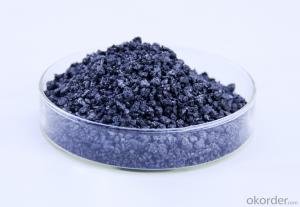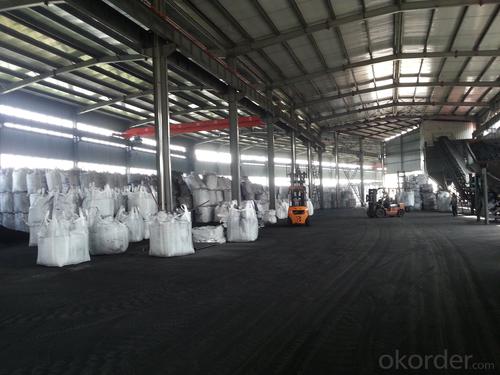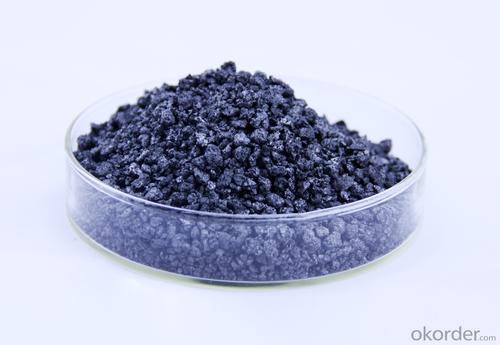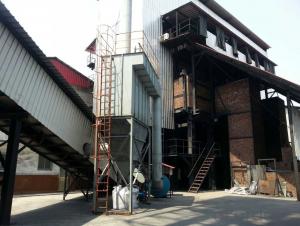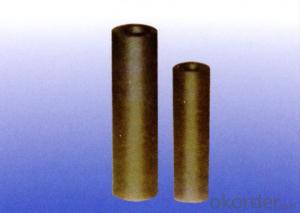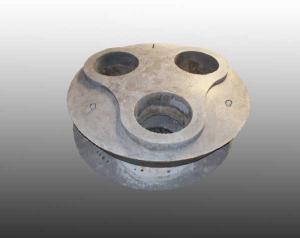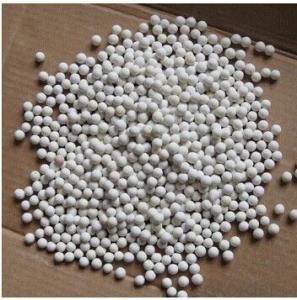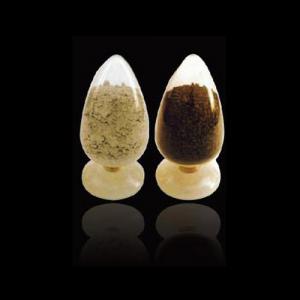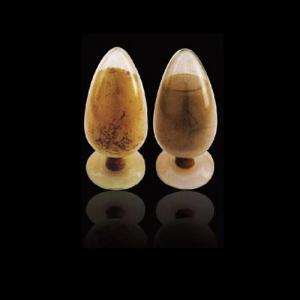Monolithic Refractories for Iron and Steel Industry - Calcined Petroleum Coke from Shanghai
- Loading Port:
- Shekou
- Payment Terms:
- TT OR LC
- Min Order Qty:
- 20 m.t
- Supply Capability:
- 1000 m.t/month
OKorder Service Pledge
OKorder Financial Service
You Might Also Like
Factory Background
The factory is majorly running and operating carbon additive (pitch coke, calcined petroleum coke and anthracite), low nitrogen carbon additive, and brake pad making material. Company is the long term supplier of Sinosteel Corporation, Shanghai Carbon Corporation, the plant of SGL Group the Carbon Company in China and some largest special carbon products producing plants.
YUAI also supplies huge amout of high quality carbon additive and graphite carbon additive to steel plants, foundries and ferrotungsten plants. YUAI has been assigned by BAO STEEL as the only organization for processing pitch coke for export purpose. The group’s major products are constantly exported to Japan, Korea, Malaysia, South East Asia countries, Europe and America, which receive praises by our consumers.
The group has invested numbers of calcinators in Anhui China to ensure the capability of producing and processing huge amount of carbon additive. Further investment is on process. According to the orders from customers, YUAI is able to processing and providing different specifications of carbon additive and other products. To provide best quality of products and to offer customers most satisfied service is YUAI’s operating objectives.
Calcined Petroleum Coke
FC:98.5%min,
S:0.5%max
A:0.8%max
V:0.7%max
Mositure:0.5%max
Size:1-5mm
This product is mainly used in steel-making and foundry. Calcined Petroleum Coke
Calcined Petroleum Coke comes from delayed coke which extracted from oil refinery. Although Calcined Petroleum Coke contains a little bit higher level of sulfur and nitrogen than pitch coke, the price advantage still makes it widely used during steel-making and founding as a kind of carbon additive/carburant.
Packaging & Delivery
Packaging Detail:25kg paper bag into 1t weaving bag 5kg, 10kg and 20kg weaving bag into 1t weaving bag 25kg weaving bag put on pallet covered with entanglement wrap product direct into packing bag 25kg paper bag put on pallet covered with entanglement Wrap 25kg weaving bag into 1t weaving bag.
Delivery Details: 7 days
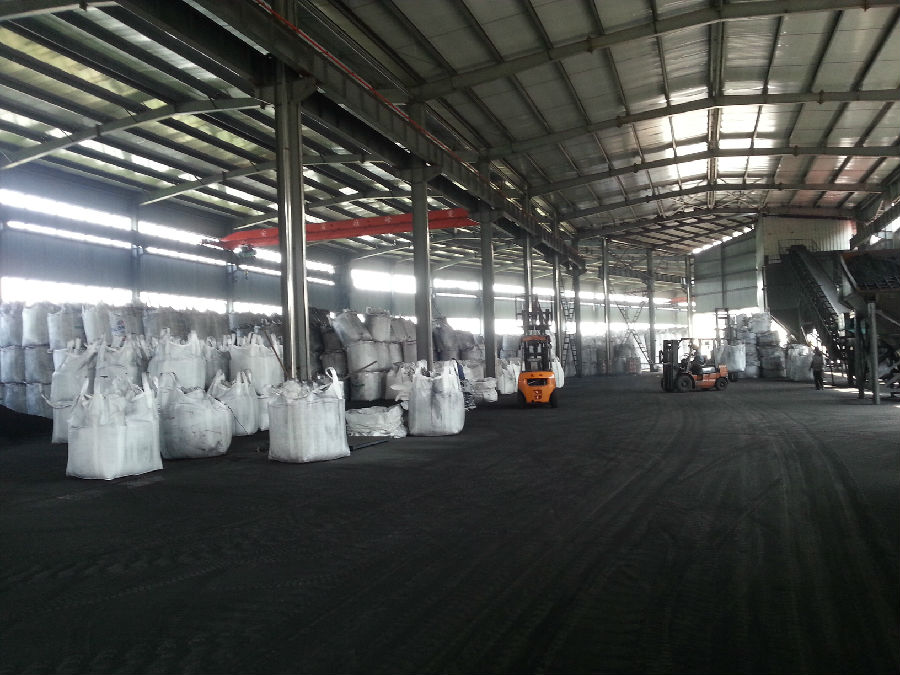
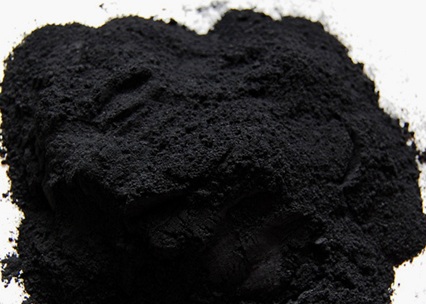
- Q: How do monolithic refractories contribute to reducing emissions in iron and steel processes?
- Monolithic refractories play a crucial role in reducing emissions in iron and steel processes by providing a more efficient and sustainable lining solution compared to traditional brick refractories. Firstly, monolithic refractories are characterized by their homogeneous structure, which allows for easier installation and repair. This feature reduces the downtime required for maintenance, resulting in increased productivity and ultimately lower emissions. In contrast, brick refractories require more extensive labor and time-consuming procedures for installation and repair, leading to longer shutdown periods and increased emissions. Moreover, monolithic refractories exhibit superior thermal insulation properties. By minimizing heat loss from the furnace or kiln, they enable higher energy efficiency and reduce the fuel consumption required for achieving the desired temperature. This reduction in fuel usage directly translates to lower emissions of greenhouse gases, such as carbon dioxide, contributing to the overall environmental sustainability of iron and steel processes. Additionally, monolithic refractories offer excellent resistance to thermal and chemical wear, enhancing the durability and lifespan of the lining. This durability reduces the frequency of refractory replacement, resulting in reduced waste generation and resource consumption. By extending the service life of the lining, monolithic refractories contribute to reducing the environmental impact associated with the production and disposal of refractory materials. Furthermore, monolithic refractories can be formulated with specialized compositions and additives to enhance their resistance to corrosion and erosion, common challenges in iron and steel processes. By minimizing the wear and tear on the refractory lining, they help maintain the integrity of the furnace or kiln, preventing the leakage of harmful gases and pollutants that would otherwise contribute to emissions. In summary, monolithic refractories contribute to reducing emissions in iron and steel processes through their ease of installation and repair, superior thermal insulation properties, increased durability, and resistance to corrosion and erosion. By optimizing energy efficiency, minimizing downtime, and reducing waste generation, monolithic refractories offer a sustainable solution for the industry, aligning with the global efforts to combat climate change and promote environmental stewardship.
- Q: What are the advantages of using low-cement castables in the iron and steel industry?
- There are numerous benefits associated with the utilization of low-cement castables in the iron and steel sector. To begin with, low-cement castables necessitate less water compared to traditional castables. Consequently, the installation process becomes faster and more efficient due to the reduced water requirement. Moreover, the lower water content results in enhanced strength development and shorter drying time, facilitating faster turnaround times during production. In addition, low-cement castables exhibit exceptional resistance to extreme temperatures and thermal shocks. Given the high temperatures prevalent in the iron and steel industry, these castables possess excellent refractory properties that enable them to withstand such harsh conditions. Consequently, the refractory lining enjoys an extended service life, reducing the need for frequent repairs or replacements. Furthermore, low-cement castables demonstrate remarkable mechanical strength and abrasion resistance. Given the nature of the iron and steel sector, where heavy materials and abrasive substances are handled, the refractory lining is susceptible to wear and tear. However, low-cement castables are capable of enduring these mechanical stresses, thereby enhancing the durability and longevity of the lining. Moreover, low-cement castables possess low porosity and high density, resulting in reduced permeability. Consequently, they exhibit high resistance to alkali attacks, chemical corrosion, and slag penetration, all of which are common challenges faced in the iron and steel industry. By employing low-cement castables, the risk of refractory failure caused by these corrosive elements is minimized. Lastly, low-cement castables contribute to improved energy efficiency. Their lower thermal conductivity ensures that less heat is conducted through the refractory lining, leading to reduced heat losses. This, in turn, translates into energy savings, as less heat is wasted and more heat is retained within the system. The significance of this advantage is particularly evident in the iron and steel industry, where energy costs can be substantial. In conclusion, the use of low-cement castables in the iron and steel sector offers a multitude of advantages, including reduced water requirement, superior thermal resistance, enhanced mechanical strength, improved resistance to chemical corrosion, and increased energy efficiency. These benefits contribute to overall cost savings, heightened productivity, and improved operational performance in the iron and steel manufacturing process.
- Q: What is the role of monolithic refractories in blast furnaces?
- Monolithic refractories play a crucial role in blast furnaces as they provide high-temperature resistance and excellent durability in the harsh operating conditions of the furnace. Blast furnaces are used in the ironmaking process to convert iron ore into molten iron, and monolithic refractories are essential for lining the interior of the furnace. One of the main functions of monolithic refractories in blast furnaces is to withstand extreme temperatures. The interior of a blast furnace can reach temperatures of up to 2,500 degrees Celsius, and monolithic refractories are designed to maintain their structural integrity and protect the furnace lining from thermal shock and erosion caused by the high temperatures. Monolithic refractories also provide insulation, preventing heat loss from the furnace. This is important as it helps to maintain the desired temperature for efficient iron production. By reducing heat loss, monolithic refractories contribute to energy savings and improved overall furnace performance. Another crucial role of monolithic refractories is to resist chemical attack from the molten iron and slag. The materials used in blast furnaces, such as iron ore, coke, and limestone, undergo various chemical reactions during the ironmaking process. Monolithic refractories are engineered to resist the corrosive effects of these reactions, ensuring a longer service life for the furnace lining. Furthermore, monolithic refractories offer excellent mechanical strength and resistance to abrasion. The materials being processed in a blast furnace, including iron ore and coke, can be abrasive. Monolithic refractories provide a protective barrier against the abrasive action, preventing damage to the furnace lining and extending its lifespan. In summary, the role of monolithic refractories in blast furnaces is to withstand extreme temperatures, provide insulation, resist chemical attack, and offer mechanical strength against abrasion. These properties contribute to the efficient operation and longevity of blast furnaces, enabling the production of molten iron for various industrial applications.
- Q: How do monolithic refractories resist corrosion from molten metals?
- Due to their unique composition and structural properties, monolithic refractories have the ability to resist corrosion caused by molten metals. Typically made from a single material like alumina, magnesia, or silica, these refractories are specifically designed to withstand harsh chemical environments and high temperatures. A significant contributing factor to their corrosion resistance is their dense and compact structure. Through a specialized manufacturing process, monolithic refractories are created with a tightly bonded material that has minimal porosity. This low porosity prevents molten metals from penetrating the refractory and causing damage. Moreover, monolithic refractories often incorporate additives or binders to enhance their resistance to corrosion. These additives, such as silicon carbide, zirconia, or other chemically stable materials, can endure the corrosive effects of molten metals. Additionally, monolithic refractories possess excellent thermal shock resistance. This means that they can endure sudden temperature changes without cracking or spalling. When in contact with molten metals, the refractory's ability to handle thermal shock prevents the formation of cracks or fractures, which would allow further penetration of the corrosive molten metal. In conclusion, the combination of a dense structure, chemical additives, and high thermal shock resistance enables monolithic refractories to effectively resist corrosion caused by molten metals. These refractories find extensive use in various industrial applications, including steelmaking, foundries, and non-ferrous metal processing, where they offer reliable and durable protection against corrosion.
- Q: What are the main applications of monolithic refractories in the iron and steel industry?
- Monolithic refractories play a crucial role in the iron and steel industry due to their various applications. Some of the main applications of monolithic refractories in this industry include: 1. Blast Furnaces: Blast furnaces are a key component in the iron and steel industry, where iron ore is converted into molten iron. Monolithic refractories are used to line the inner walls of blast furnaces, providing insulation and protection against the extreme temperatures and corrosive environment. They help maintain the integrity and efficiency of the furnace, ensuring smooth operation and prolonged service life. 2. Ladles and Tundishes: Ladles and tundishes are vessels used for transporting molten metal from the blast furnace to the next processing stage. Monolithic refractories are employed to line these vessels, as they can withstand the high temperatures and chemical reactions that occur during metal transfer. They prevent heat loss, minimize metal contamination, and improve the overall efficiency of the process. 3. Steelmaking Furnaces: Monolithic refractories are extensively used in various types of steelmaking furnaces, such as electric arc furnaces (EAFs) and basic oxygen furnaces (BOFs). These furnaces require lining materials that can withstand extreme temperatures, chemical reactions, and mechanical stresses. Monolithic refractories provide excellent thermal insulation, erosion resistance, and structural integrity, enabling efficient and reliable steel production. 4. Continuous Casting: Continuous casting is a widely used method for producing steel in large quantities. During this process, molten steel is continuously poured into a water-cooled mold, solidifying it into solid steel billets or slabs. Monolithic refractories are used to line the walls and floor of the mold, ensuring thermal insulation and preventing the adhesion of the solidified steel to the mold. They help maintain the desired shape of the casting and improve the quality of the final product. 5. Reheating Furnaces: Reheating furnaces are employed to heat steel billets or slabs before further processing. Monolithic refractories are utilized to line the walls and roof of these furnaces, as they can withstand high temperatures and thermal cycling. They provide insulation, reduce heat loss, and improve the efficiency of the reheating process. Overall, monolithic refractories are essential in the iron and steel industry as they offer high-temperature resistance, chemical stability, and mechanical strength. They contribute to the longevity and efficiency of various equipment and processes, ensuring smooth operations and high-quality steel production.
- Q: How are monolithic refractories used in the iron and steel industry?
- Monolithic refractories are extensively used in the iron and steel industry for various applications due to their superior performance and versatility. These refractories are composed of a single, uniform material and are designed to be used as a seamless lining in high-temperature environments. In the iron and steel industry, monolithic refractories play a crucial role in different stages of the manufacturing process. One of the primary applications is in the blast furnace, where monolithic refractories are used to line the inside of the furnace. This lining is subjected to extremely high temperatures and harsh chemical reactions. Monolithic refractories provide excellent thermal insulation and resistance to chemical attack, ensuring the structural integrity and longevity of the blast furnace. Another important application is in the steelmaking process. Monolithic refractories are used to line the ladles and tundish, which are used to transport and pour molten steel. These refractories are specially designed to withstand the high temperatures and corrosive nature of the molten steel, preventing contamination and ensuring the quality of the final product. Moreover, monolithic refractories are also used in various ancillary equipment and structures in the iron and steel industry. They are employed in furnaces, kilns, and other heat treatment systems to provide insulation and maintain high-temperature conditions. Additionally, monolithic refractories are used in the construction of chimneys, exhaust ducts, and other exhaust systems, where they provide thermal insulation and resistance to corrosive gases. Overall, monolithic refractories play a vital role in the iron and steel industry by providing high-temperature insulation, chemical resistance, and durability. They help optimize the production process, improve energy efficiency, and ensure the quality of the final product. With their versatility and excellent performance, monolithic refractories have become an indispensable component in the iron and steel manufacturing industry.
- Q: How do monolithic refractories withstand the thermal cycling in coke oven applications?
- Monolithic refractories are specifically designed to withstand the harsh conditions of thermal cycling in coke oven applications. Thermal cycling refers to the repetitive heating and cooling cycles that occur in these high-temperature environments. One of the key factors that enables monolithic refractories to withstand thermal cycling is their composition. They are typically made from a combination of different refractory materials, such as high-alumina, silica, and magnesia, which provide excellent thermal shock resistance. These materials have low thermal conductivity and high thermal expansion properties, allowing them to expand and contract without cracking or spalling under extreme temperature changes. Moreover, monolithic refractories have excellent bonding and adhesion properties, allowing them to form a strong and cohesive structure. This ensures that they can withstand the mechanical stresses caused by the thermal cycling process. Additionally, monolithic refractories can be installed in place through various techniques, such as gunning, casting, or ramming, which further enhances their resistance to thermal cycling. Furthermore, the presence of specialized additives and bonding agents in monolithic refractories improves their resistance to thermal cycling. These additives can enhance the refractory's ability to absorb thermal shock and minimize cracking, thus increasing its durability and longevity in coke oven applications. Overall, monolithic refractories' ability to withstand thermal cycling in coke oven applications can be attributed to their carefully formulated composition, strong bonding properties, and the incorporation of specialized additives. These characteristics make them highly reliable and suitable for the extreme temperature fluctuations experienced in coke oven operations.
- Q: Can monolithic refractories be used for the lining of blast furnace runners and troughs?
- Yes, blast furnace runners and troughs can have their lining done with monolithic refractories. Monolithic refractories, unlike traditional refractory bricks that are made by assembling individual units, are composed of a single, homogeneous structure. There are several advantages to using monolithic refractories for lining blast furnace runners and troughs. Firstly, they exhibit excellent thermal shock resistance, which is vital in this application given the extreme temperature fluctuations the lining is exposed to. Additionally, monolithic refractories have a good resistance to chemical attack from the molten metal and slag, which helps prolong the lining's lifespan in the harsh working environment of blast furnaces. Moreover, monolithic refractories can be easily installed in intricate shapes and structures, allowing for greater flexibility in designing the lining of blast furnace runners and troughs. This ease of installation also results in reduced downtime during maintenance and repair, as monolithic refractories can be applied quickly and efficiently. To summarize, monolithic refractories are a suitable option for lining blast furnace runners and troughs due to their thermal shock resistance, chemical resistance, and easy installation. Their use can contribute to improving the longevity and performance of these critical components in blast furnace operations.
- Q: What are the recommended installation techniques for monolithic refractories?
- The recommended installation techniques for monolithic refractories typically involve proper surface preparation, mixing of refractory materials, and precise application. It is crucial to clean and remove any loose debris from the substrate before installation. The refractory materials should be mixed thoroughly with the appropriate water content to achieve the desired consistency. It is recommended to use vibration or tamping techniques during application to remove air pockets and ensure proper compaction. Careful curing and drying processes should be followed to prevent thermal shock and achieve optimal performance.
- Q: What are the common applications of monolithic refractories in blast furnaces?
- Monolithic refractories are commonly used in blast furnaces for various applications such as lining and repairing the hearth, taphole, and slag line, as well as for hot repairs and maintenance. These refractories provide high-temperature resistance, erosion and corrosion resistance, and thermal shock resistance, thereby ensuring the efficient and reliable operation of blast furnaces in the iron and steel industry.
Send your message to us
Monolithic Refractories for Iron and Steel Industry - Calcined Petroleum Coke from Shanghai
- Loading Port:
- Shekou
- Payment Terms:
- TT OR LC
- Min Order Qty:
- 20 m.t
- Supply Capability:
- 1000 m.t/month
OKorder Service Pledge
OKorder Financial Service
Similar products
Hot products
Hot Searches
Related keywords

